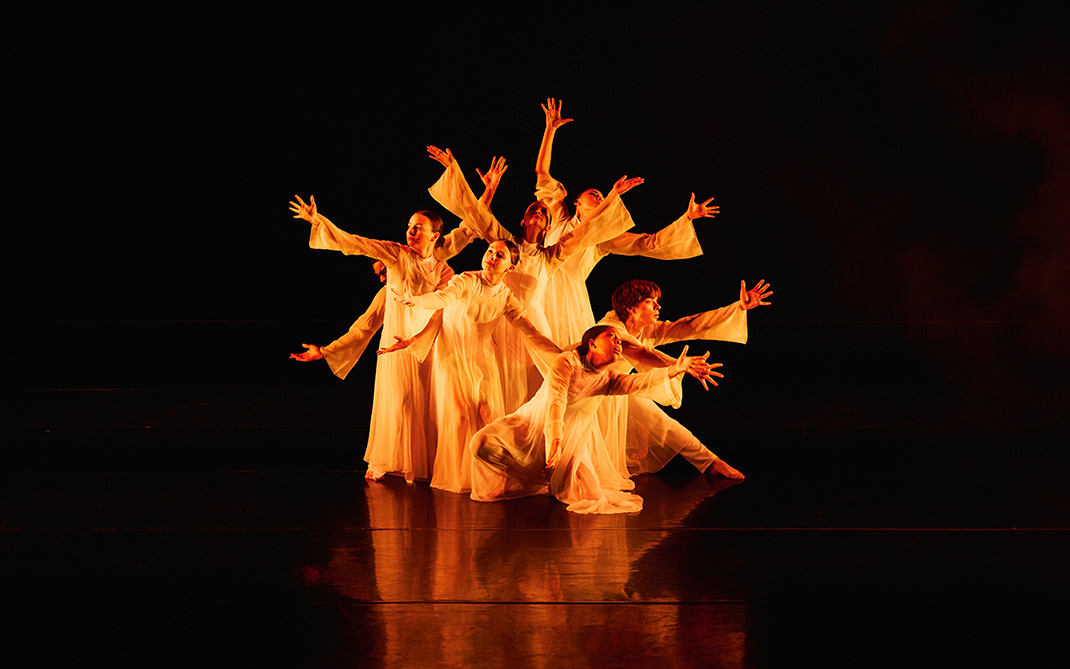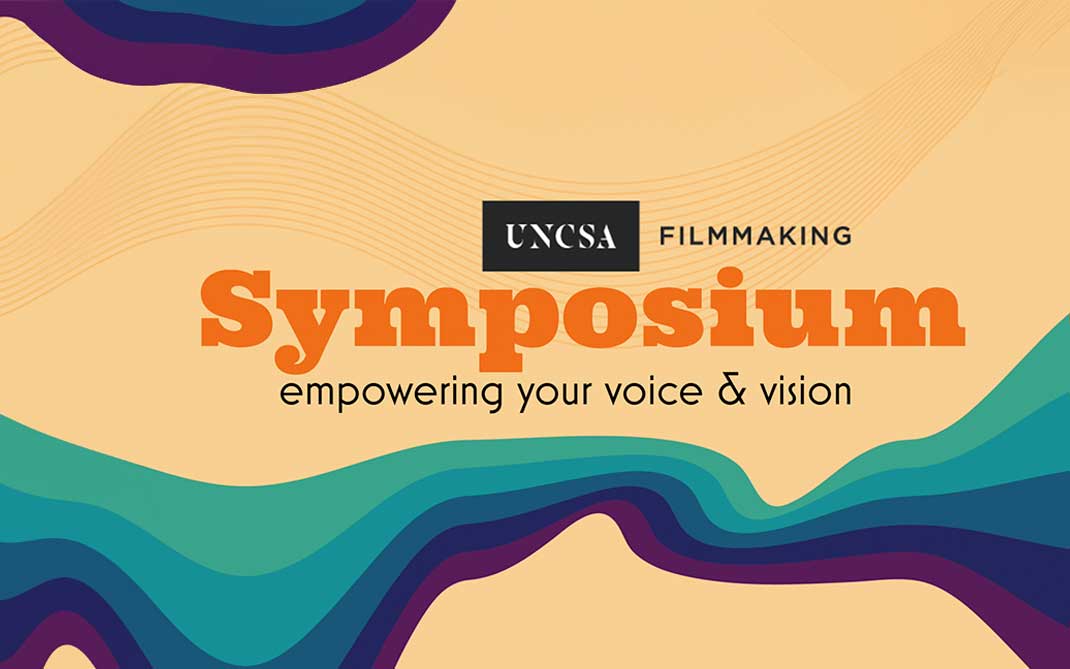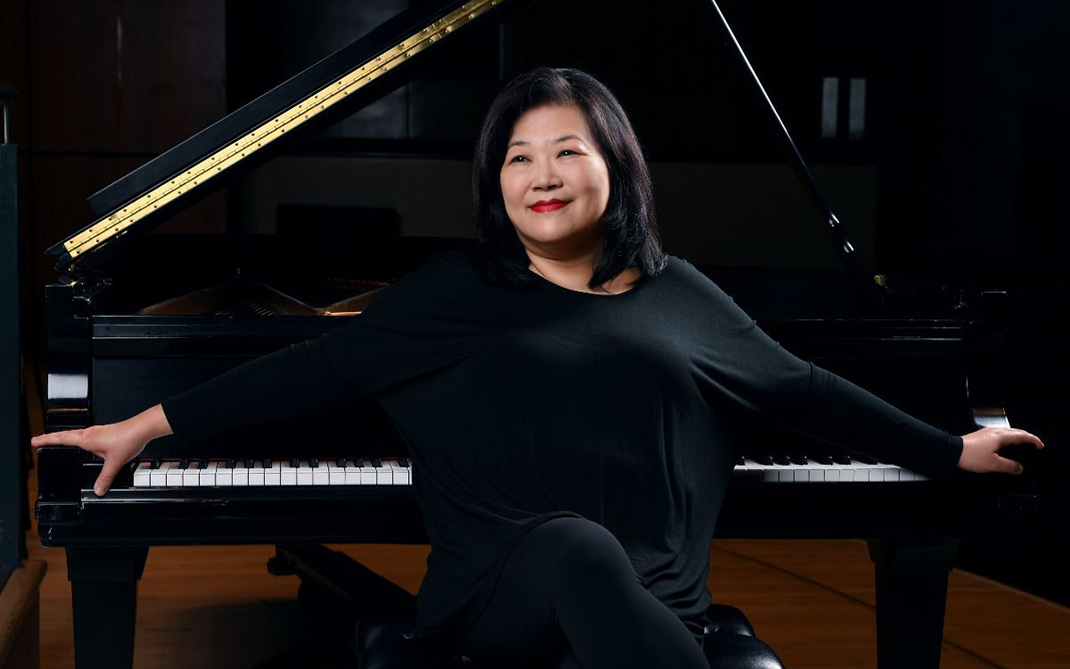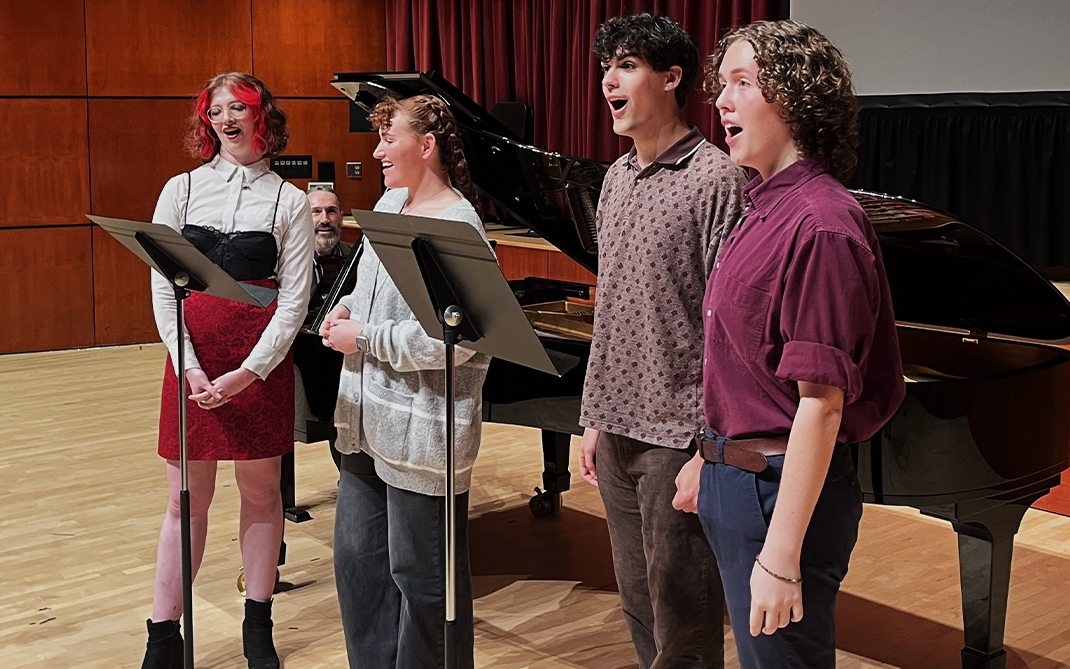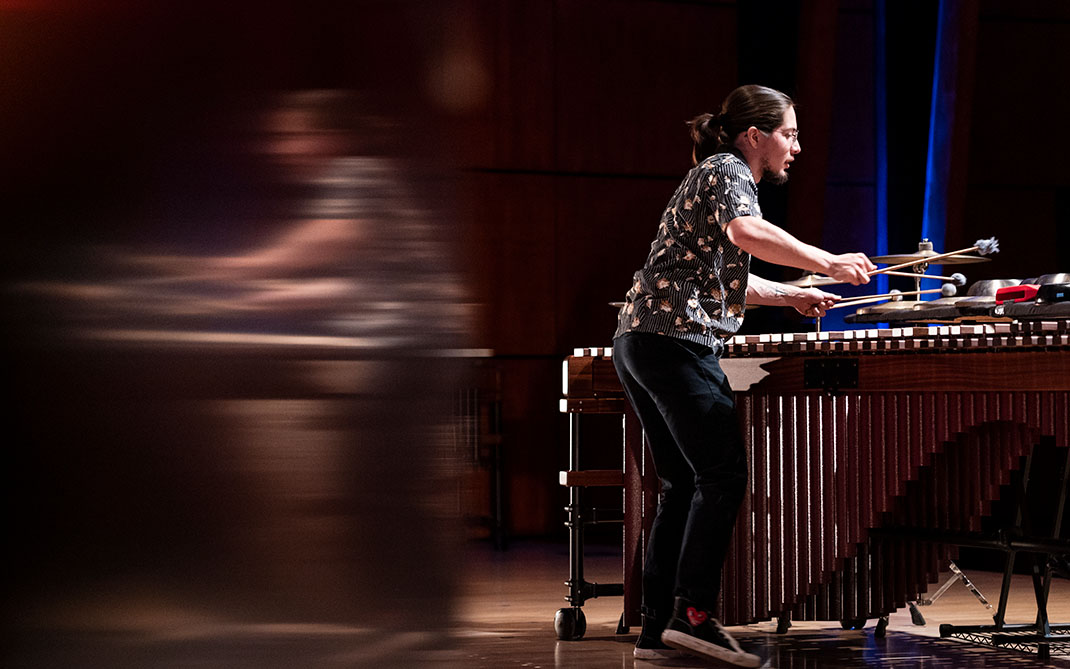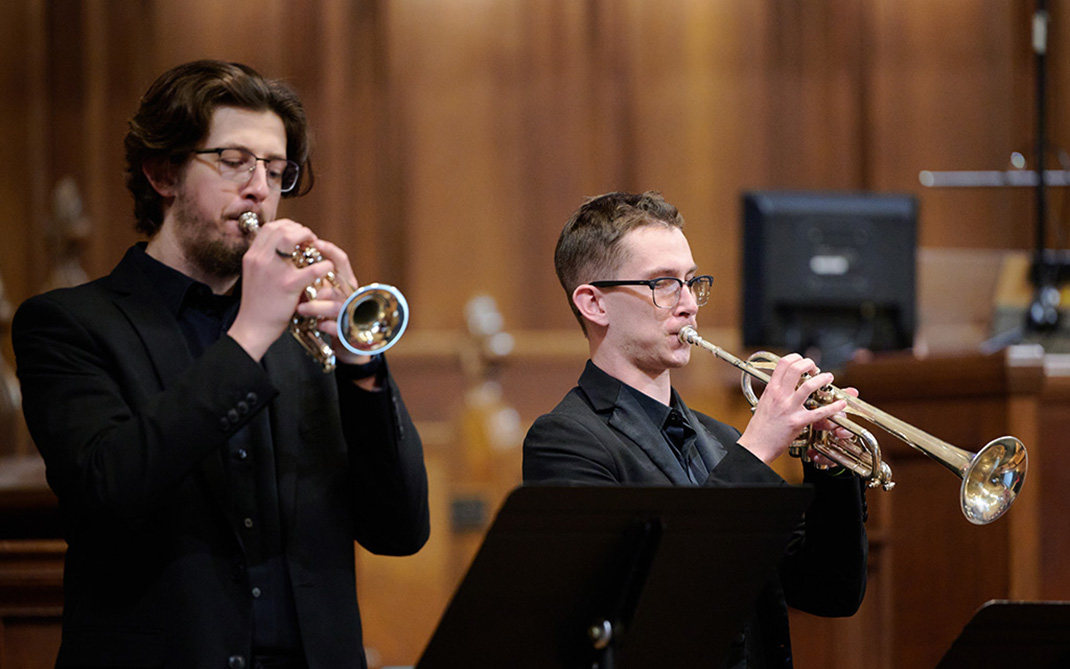Artist As Leader: Samuel Hoi
Having helmed distinguished art schools and programs in Paris, Washington, D.C. and Los Angeles, Samuel Hoi became president of Maryland Institute College of Art (MICA) in 2014. In 2017, along with Mikhail Baryshnikov, Ava DuVernay and Sandra Cisneros, he received a Ford Foundation Art of Change Fellowship, one of the few arts administrators to earn the honor in recognition of his work fostering “powerful works of art that help advance freedom, justice and inclusion, and strengthen our democracy.”
In this interview, Samuel (or Sammy, as he likes to be called) reveals how his cross-cultural background, his artistic training and his willingness to take on myriad challenges shaped the way he leads and fosters leadership in others today — at MICA and in the Baltimore communities with whom MICA partners.
Choose a question to begin exploring the interview:
- How did you train as an artist and how did that training influence how you lead?
- I wonder if you could talk a little bit about skills that you learned as an artist and how they show up in your leadership?
- Tell us about some of the projects you’re currently working on at MICA.
- How do you encourage other people, especially your students, to see leadership as an attractive and important part of being an artist?
- Epilogue
Corey Madden: How did you train as an artist and how did that training influence how you lead?
Samuel Hoi: I grew up in Hong Kong, coming here as an immigrant. I have the kind of traditional background and education that you’re supposed to excel, supposed to work hard, but also supposed to keep your mouth shut and know your place. [He laughs.] I was very shy when I came to the States, so for me, leadership was something that was very foreign. I never imagined I would one day become a college president or a leader of any kind. It’s really through my very fortunate life journey that I discovered leadership along the way.
I think the big change happened when I immigrated to the United States at the age of 17. I finished my last two years of high school in Honolulu. When I went to an American high school, leadership was thrust upon me in some way. I was first recognized by faculty who said, “Oh, there’s a hard-working student who could do that,” and I was asked to be a teaching assistant.
I would say that my path of leadership was laid very much by my not saying no. When someone gave me an opportunity, I said, “OK, I’ll step in and be that teaching assistant.” And then other students saw that I would do the work.
I was an immigrant, but I’d hang out a lot with international students because we had a similar background. We had an international student club, and one year someone needed to organize a trip. No one wanted to do it, and they voted and said, “Oh, Sammy would do it!” And I said, “OK.” I did that, and next thing I knew I was voted the president of the international student club because I would do the work.
I moved into the leadership pathway without ever wanting to seize power for my own purpose, but because other people asked me and I said, “Oh, this makes sense; this is needed,” and I stepped in.
I moved into the leadership pathway without ever wanting to seize power for my own purpose, but because other people asked me and I said, “Oh, this makes sense; this is needed,” and I stepped in. It was very organic. I did not further my leadership journey in college and in law school. When I went to work, I applied the same work ethic and the same purpose and just said, “Oh, this needs to be done.” I would just do the work. And because I was well trained, my work was noticed.
I went to Parsons School of Design for my artistic training in illustration. When I finished my degree, I wanted to become a freelance designer and an illustrator. The school came back to me and said, “We like your work, and we have this great opportunity. Would you like to consider it?” I was quite young at that time, and the opportunity was to become the director of a foreign campus, a very small campus in Paris. I thought, “Oh, wow, I could go to Paris for a couple of years and do this wonderful position!” So I agreed. My professional mentor, the Executive Dean who discovered me, gave me that opportunity. I did not say no, and I went.
When I was in Paris, I directed the little campus for three years and really fell in love with the work because it brought together the creative environment — I was in an art school, running an art program — and the administrative skills that I acquired through the law school training. Given my own Chinese-American background, the Confucian pathway of helping others advance themselves and their lives through education has such purpose and meaning for me. So all those things came together for me. I realized that this could be my path forward. So I happily gave up my artistic practice to go on this art-school-administration-and-support pathway, and that became my journey.
My work in Parsons Paris led to my next job. I was asked to go to the Corcoran Gallery of Art and be the Dean of the Corcoran School of Art when it was still an independent museum school in Washington, D.C. Then I was headhunted and went to Otis College for Design in Los Angeles.
Everything was very organic. During my years in Paris, I came to an internal conclusion that, “I’m comfortable with the leadership position. This is a great way to serve.” And then when I had my first presidency at Otis in Los Angeles, it made me realize that sometimes the position in which you can have the most influence and that allows the most direct path to accomplish things in a way that you like best is the top position. Then I had no hesitancy staying in that area.
But the only way I can reconcile being in the spotlight and leading other people when I need to is to really understand that my leadership is in service of something bigger and it’s in service of other people. When you have that realization, then you observe and see what other people need. And sometimes people need a leader to be — authoritative is the wrong word — to have the strength to come out and represent that whole body and advocate for what they believe in. I don’t hesitate to do that.
My artistic training definitely influences and informs my leadership approach. The first and perhaps too obvious thing to mention is creativity. It sounds cliché, but it’s very true. I’m very excited by originality and not afraid of the unprecedented. It’s very fun for me to imagine possibilities — ways to innovate things, ways to look at traditional things in contemporary context and relevance — and help to bring them into reality or amplify their significance and meaning. I can’t say whether my artistic background actually instilled that in me or that’s why I was drawn to art in the first place. But the two elements are definitely connected and feed each other.
Artists are makers and tinkerers. As a leader, I like to make things happen and make things better. I’m action-driven, and I do think that my art background has a lot to do with that.
The second thing I want to mention is that artists are makers and tinkerers. As a leader, I like to make things happen and make things better. I’m action-driven, and I do think that my art background has a lot to do with that.
And the third thing I want to mention is perhaps the most significant, and this is what I call the blessing and the curse of being an artist. That is, I really cannot do things very well unless I have a passion for and a belief in what I do. Now, I’m not so lucky — very few people are — that my daily job is always full of big and small tasks that are fun. What I mean to say is that as a leader, I choose carefully what, where and whom I serve so that once I set my path, I know where my purpose is vested and where my convictions lie. That knowledge, that framework, that purpose can ignite the passion and energy that I bring to my work. Then even obstacles to be overcome can have meaning. Does that make sense to you?
Corey: Wonderful. The word framework really excites me because I think about you as an illustrator and an artist. One of the things that I really notice about someone who works within the framework, let’s say, of the page or the canvas is that a lot of the key decisions are compositional. I wonder if you could talk a little bit about skills that you learned as an artist and how they show up in your leadership. Are you aware of that and do you pay attention to it?
Sammy: I’m not aware of it on a daily basis. But now that you’ve prompted my thinking, I can definitely relate back to that. For example, you just mentioned the compositional skills and decisions one would have to make as an artist. Because I was trained as an illustrator, I took lots of painting and drawing classes. I took graphic design. I took photography. Central to all that I did in art school was learning how to observe, how to really see before making a mark on paper or before clicking a camera shutter to take an image. You get a spark of an idea, you get a spark of an interest, and you draw and you build or you crop an image in multiple ways until you discover and feel the rightness of your approach. And then you craft that final expression that you want to present to the world.
I would like to think that my leadership approach is very much about this freedom and joy of ideation, of spark, and that habit of iterating many possible scenarios and solutions around those ideas and those sparks until something feels just right. There’s a great deal of similarity in what you described and how I was trained in art school and what I bring to my work.
I would say also that in art, you learn to discover and exercise your voice and “vision,” and you learn to commit to the excellence of your craft ... You cannot really be an authentic leader unless you know how to show your true self.
I would say also that in art, you learn to discover and exercise your voice and “vision,” and you learn to commit to the excellence of your craft. That is also very relevant to leadership work. You cannot really be an authentic leader unless you know how to show your true self. Then you have to use your compelling voice and clarify the case for others to join you on that journey and join you in that work.
Finally, I would say, in visual arts, critique is a key process in creation. You learn to present your ideas and your work, you learn to receive feedback from multiple sources and you then have to use your own point of view to synthesize from these multiple sources and draw your own conclusion to guide you forward. You also learn to share your opinions and your perspectives in a respectful, useful-to-others and questing manner that is open-ended and not an order or mandate to those around you.
All of that, I would say, is very important in mindful leadership work.
Corey: I’m thinking of the many artists you’ve worked with, young artists and also your incredible faculty at three different major universities or conservatories of art. Also all the artists who’ve visited. You’re obviously very much in the nexus of the art world, and I’m wondering how you think your artistic sensibility shows up in the way that you lead others.
Sammy: I think, having been trained in art school, I appreciate ambiguity. I can see that oftentimes you need to be creative and very observant. You need to be very respectful to help people bridge their comfort and discomfort and from one phase to the other. In that work, I would say that I’m someone who observes different styles of leadership and tries to bring other people along, empower them and learn from them so that we can have different leadership capabilities and styles manifest along the way forward. I do think that my artistic training has some bearing on how I work and, when needed, lead others.
Corey: Tell us about some of the projects you’re currently working on at MICA.
Sammy: We are in the middle of a strategic-planning process that’s concluding in maybe two to three months’ time. The number one goal is to establish a model of what we call integrative education in art and design. It’s very much about acknowledging the centrality of artists and designers and their special way of looking at the world, of making things and trying to be meaningful in the world in arenas way beyond the traditional platforms in which art, design and culture are recognized. We are saying that we want to provide, just as you are doing at your institution, the students the mindset, the confidence, the experience, and the skills to come into all these different sectors in a way they can assert themselves as leaders.
We are very actively thinking about how to use art, design and culture as social, economic, technological, and sustainability strategies that others can embrace and work with.
We are very actively thinking about how to use art, design and culture as social, economic, technological, and sustainability strategies that others can embrace and work with. To give you an example, we have a fantastic project right now called the Natural Dye Initiative. MICA received a grant from the Maryland Department of Commerce to examine urban farming and using indigo and other natural-dye products and methods that can stimulate small-scale local manufacturing of products. That grant had as its origin a cultural exchange between Baltimore and a city in South Korea that has a deep natural dyeing tradition.
When MICA was asked to be the project implementer, we were able to bring to this project the awareness of the city of Baltimore and the United States’ slave-history perspective. We were able to say, “Look, if we’re going to examine how to do indigo and how to do natural dye here, we have to recognize the very fraught and complex history that’s unique to the States.” While this started as an international exchange program, we cannot not acknowledge that history, especially in the city of Baltimore where 63.7% of the population is of African American heritage.
We then built that project as: “Let’s not do an institutional project. Let’s do a community co-design and collaborative project.” I won’t give you every single detail, but about two years down the road now, we are modeling such a project. We’ve opened up the walls and gates of the college, the metaphoric gates. The Natural Dye Initiative is running classes where faculty members and community leaders and elders who are holding the art and the history of natural dyes and productions are in the classroom together. We also have community members, students from a public university and MICA students constructing an intergenerational teaching-and-learning community that’s vastly different from the traditional professor-to-students, one-way generational transmission of expertise.
Through this project, MICA as an institution is learning a great deal from innovating with a new way of teaching and learning. We are also creating for the state and for the city a new model of working that combines international exchange, local history, social and racial tensions and issues that need some healing into a wonderful complexity and into a class. I would say that every single faculty member and student and community member who’s experienced it has said that this is the future. It’s so complex that we cannot replicate it across campus yet, but it has given us this incredible model from which we can derive many other lessons and many other experiments. I hope that this gives you a clear enough example.
Corey: It’s absolutely wonderful and very inspiring. We have someone in our arts enterprise lab who is a natural-dye entrepreneur, and I want to make sure that they find out more about this project. It sounds great.
Sammy: Absolutely. And the great thing is that we are also exchanging this kind of learning with the state’s Department of Commerce. They are so inspired that they’ve renewed the grant.
Corey: That’s fantastic, really wonderful. It leads me right to my last question. How do you encourage other people, especially your students, to see leadership as an attractive and important part of being an artist?
Sammy: There are certain conceptual barriers in the artistic training system right now that tend not to encourage artists to step forward and acknowledge themselves as leaders. I certainly had that fallacy in my mind before.
At MICA, we talk explicitly about leadership but do not force people to be a leader. Rather we lay things out in such a way that everyone has an experience to engage with something they are passionate about, engage in something that they deeply believe in.
At MICA, we talk explicitly about leadership but do not force people to be a leader. Rather we lay things out in such a way that everyone has an experience to engage with something they are passionate about, engage in something that they deeply believe in. If they are deeply passionate about something and believe that they can actually make a change, in order to move the change forward, they have to own part of that action. And ownership of that action is the beginning of leadership.
Those who have a taste of leadership and like it will naturally step up and begin to see themselves in a different way. For those who are natural leaders, we just make sure that we get out of the way or we construct the kind of opportunity and space for them to rise further and recognize themselves in that space. For different people with different ways, we take the approach of, “Let’s make it pervasive, let’s make it natural, let’s make it organic to the education they’re receiving. Also let’s not separate between academic, studio work and, say, student affairs.”
Every single moment at MICA is seen as an educational moment. It’s a very holistic environment and journey that students join when they come on this campus.
Corey: It sounds beautiful.
Sammy: That’s how leadership is groomed. We recognize student leaders, whether they are mentors in, let’s say, the English as a Second Language lab or residence coordinators or Student Voice Association leaders. There are just many different ways to lead.
Epilogue
Sammy Hoi shows us that life can take you in all sorts of unexpected and wonderful directions if you let it. Observations from our conversation with Sammy include:
- Say yes and work hard. It can open doors of possibility and opportunities to lead. Be willing to be adventurous.
- Bring all of you to the table. Knowing your skillset may inform where you go to next. Artists can lead by instinct, experience or a mix of both.
- Let your values be important. Be aware of both what is important to you and what is non-negotiable. You set the boundaries on who you want to be and what you stand for.
- Know your purpose. For Sammy, it is to be in service to others. What excites you to get out of bed every day?
- Leadership as ideation and iteration. Leadership is not static but rather a series of opportunities to establish and reestablish oneself. Use each opportunity to grow further into the next evolution of you.
